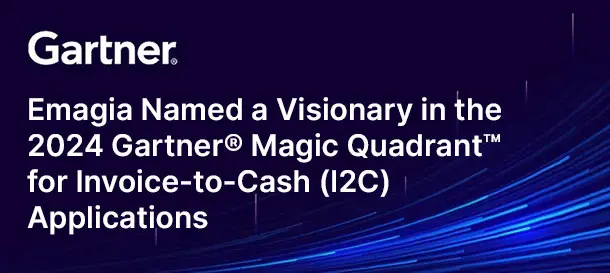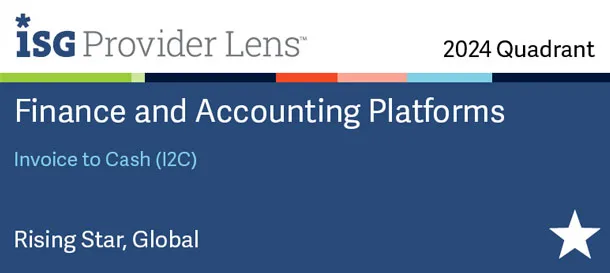Credit management automation is reshaping finance for modern CFOs. By leveraging AI, machine learning, and predictive analytics, organizations can make faster credit decisions, mitigate risks, and optimize working capital. In 2026, staying ahead with emerging trends and understanding CFO priorities is critical for maintaining financial resilience and competitive advantage.
What is Credit Management Automation?
Credit management automation refers to the use of technology to streamline credit evaluation, risk assessment, monitoring, and collections. These automated processes reduce manual effort, improve accuracy, and enable real-time decision-making.
Core Components of Automated Credit Management
- Credit risk assessment automation
- Real-time credit scoring and monitoring
- Automated credit approvals and limits
- AI-driven credit decisioning and predictive analytics
- Integration with ERP and finance systems
Why CFOs Should Prioritize Automation
For CFOs, automation enhances visibility, accelerates decision-making, reduces risk exposure, and improves overall operational efficiency. It also supports strategic goals such as working capital optimization and liquidity management.
Key Benefits of Credit Management Automation
Faster Credit Decisions
AI algorithms evaluate customer data, payment history, and alternative information to approve or flag credit applications quickly, reducing turnaround time and improving customer satisfaction.
Enhanced Risk Management
Real-time monitoring dashboards and predictive modeling allow CFOs to identify high-risk accounts proactively, mitigating potential defaults.
Working Capital Optimization
Automating credit processes helps reduce Days Sales Outstanding (DSO), accelerating cash flow and ensuring financial flexibility for strategic investments.
Regulatory Compliance
Automated credit systems maintain detailed audit trails, enforce compliance with KYC/AML standards, and reduce the risk of regulatory penalties.
Emerging Trends in Credit Management Automation 2026
Understanding key trends allows CFOs to adopt future-ready strategies for credit management automation.
AI-Powered Credit Scoring
Machine learning models analyze structured and unstructured data to provide dynamic credit scores, allowing more accurate and real-time credit decisions.
Autonomous Credit Evaluation
AI-driven systems process credit applications automatically, applying pre-set rules and advanced algorithms to approve, reject, or flag accounts for manual review.
Real-Time Credit Monitoring Dashboards
Dashboards provide instant insights into credit limits, exposure, overdue payments, and risk trends, enabling proactive decision-making.
Predictive Credit Risk Modeling
Predictive analytics identifies accounts with high default probability, helping finance teams implement early interventions and minimize financial losses.
Explainable AI (XAI) in Credit Decisions
XAI ensures that AI-driven credit decisions are transparent, interpretable, and understandable for CFOs, increasing trust and governance in automated processes.
Cloud-Based Credit Management Platforms
Benefits of Cloud Adoption
Cloud platforms provide scalability, faster implementation, remote access, and seamless integration with ERP and O2C workflows.
Integration with ERP and SaaS Ecosystems
Cloud-based credit solutions integrate with financial systems, enabling end-to-end automation and real-time data flow across accounting, AR, and collections.
AI and Machine Learning Applications in Credit Management
Automated Credit Evaluation
AI evaluates creditworthiness using historical payment data, industry benchmarks, and alternative data, ensuring faster approvals and consistent decision-making.
Predictive Analytics for Risk Assessment
Machine learning predicts potential credit risks, enabling CFOs to proactively manage high-risk accounts and optimize cash flow.
Fraud Detection and Compliance Monitoring
AI identifies anomalies and potential fraud, ensuring compliance with financial regulations and safeguarding organizational assets.
How CFOs Can Leverage Automation in Credit Management
Optimizing Cash Flow and Working Capital
By implementing AI and automation, CFOs can reduce DSO, improve liquidity, and accelerate collections across their enterprise.
Data-Driven Decision Making
Automated analytics and predictive models provide CFOs with actionable insights to make informed credit and finance decisions.
Digital Transformation Strategy
Integrating automated credit systems with ERP and O2C processes streamlines workflows, reduces manual errors, and supports long-term finance digitalization.
Risk Mitigation Strategies
Automation enables dynamic credit limits, continuous risk monitoring, and early interventions to reduce exposure and protect financial health.
Advanced AI Applications in Credit Management
Autonomous Credit Risk Evaluation
Autonomous AI systems evaluate credit applications without manual intervention. These systems use predefined rules, historical data, and predictive models to approve or flag accounts. CFOs can rely on this automation to maintain accuracy while reducing operational bottlenecks.
Generative AI for Credit Insights
Generative AI analyzes large datasets to create actionable insights for credit scoring, collections strategy, and risk assessment. It can simulate credit scenarios, enabling CFOs to make informed decisions faster than traditional methods.
Cognitive Automation in Credit Management
Cognitive automation leverages AI and natural language processing to interpret unstructured financial data, such as invoices, contracts, and payment communications. This reduces manual workload and accelerates credit evaluation.
Predictive Analytics and Real-Time Monitoring
Dynamic Credit Limit Adjustments
Predictive models assess customer behavior and financial health to recommend credit limit adjustments in real time. This ensures risk exposure is continuously optimized, improving financial stability.
Early Warning Systems for Delinquent Accounts
AI-driven early warning systems identify accounts with high default probability, allowing finance teams to intervene proactively. This helps reduce DSO and enhances cash flow predictability.
Real-Time Credit Monitoring Dashboards
Interactive dashboards provide instant visibility into customer credit status, pending approvals, and potential risks. CFOs can track trends and take data-driven actions immediately.
Cloud and API-First Credit Ecosystems
Cloud-Based Credit Management Platforms
Cloud platforms offer scalability, accessibility, and faster deployment. They integrate seamlessly with ERP, CRM, and O2C systems, allowing real-time credit monitoring and automated workflows across the enterprise.
API-Driven Credit Management Integration
APIs connect credit management software with other financial systems, enabling data sharing, process automation, and seamless collaboration between finance, sales, and operations.
Hybrid Cloud-ERP Credit Strategies
Organizations adopting a hybrid model can combine the security of on-premise ERP with the flexibility of cloud solutions. This approach ensures continuity, data security, and optimized credit operations.
CFO Roadmap for Credit Management Automation in 2026
Prioritizing AI-Driven Credit Decisions
CFOs must focus on integrating AI into credit scoring, limit setting, and risk evaluation to improve speed and accuracy while reducing exposure to bad debt.
Working Capital Optimization Goals
Automation helps reduce DSO and improves liquidity. CFOs can use predictive analytics to plan cash flow, allocate capital efficiently, and ensure operational agility.
Data-Driven Credit Policies
By leveraging AI insights, CFOs can define smarter credit policies, enforce compliance, and dynamically adjust terms based on real-time risk evaluation.
ROI Measurement of Automation Investments
Tracking the impact of automation on collections efficiency, risk reduction, and cash flow enables CFOs to demonstrate tangible ROI and secure executive buy-in for further digital initiatives.
Autonomous Credit Ecosystems
End-to-End Credit Lifecycle Automation
From application to collections, autonomous ecosystems reduce manual intervention, ensure compliance, and provide complete visibility across all stages of the credit lifecycle.
Smart Collections and Dispute Resolution
AI-assisted collections streamline communication with customers, automatically resolving disputes and allocating payments accurately to enhance customer relationships.
Cross-Border and Multi-Currency Credit Management
Automation enables seamless management of international credit operations, handling multiple currencies, regulatory requirements, and compliance checks with minimal manual effort.
AI and Predictive Cash Management for CFOs
Liquidity Forecasting Using AI
Predictive analytics provides real-time insights into cash inflows and outflows, allowing CFOs to optimize liquidity and reduce reliance on short-term financing.
Reducing Risk Through Scenario Analysis
AI can simulate multiple financial scenarios, helping CFOs anticipate potential challenges, plan contingencies, and mitigate credit-related risks proactively.
Connected Finance Architecture
Integration of automated credit systems with finance, treasury, and AR platforms ensures a unified view of all financial operations, enhancing strategic decision-making.
Hyperautomation in Credit Management
Defining Hyperautomation
Hyperautomation combines AI, machine learning, robotic process automation (RPA), and advanced analytics to fully automate credit processes. CFOs can leverage hyperautomation to reduce manual effort, accelerate decision-making, and improve compliance.
End-to-End O2C Automation
Hyperautomation enables complete integration of the order-to-cash cycle with credit management. Tasks from credit evaluation to collections are automated, ensuring accuracy, reducing delays, and increasing operational efficiency.
AI-Powered Decision Engines
AI-driven decision engines continuously analyze risk data, payment history, and market conditions to dynamically adjust credit limits, terms, and collection strategies in real time.
Predictive Collections and Cash Flow Optimization
Forecasting Payment Behavior
Predictive analytics uses historical payment trends to anticipate overdue accounts, helping CFOs plan proactive collection strategies.
Intelligent Dispute Resolution
Automation identifies disputed invoices and initiates intelligent resolution workflows, allocating resources effectively and reducing delays in cash application.
Optimizing Working Capital
Predictive collections and automated credit scoring reduce DSO, improve cash flow, and free capital for strategic investments, supporting CFO priorities for financial growth.
SaaS-Based Credit Management Solutions
Benefits of SaaS Platforms
SaaS-based credit management systems provide scalability, remote accessibility, and integration with ERP and AR platforms. CFOs can manage global credit operations efficiently while maintaining data security.
Cloud Deployment and Integration
Cloud solutions integrate seamlessly with financial systems, allowing real-time data flow, automated reporting, and enhanced collaboration between finance, sales, and operations teams.
Real-Time Dashboards and Reporting
SaaS platforms offer dashboards that provide instant insights into credit exposure, overdue accounts, and financial health, enabling data-driven strategic decisions.
Emerging Trends in Credit Management Automation 2026
AI-Powered Credit Risk Models
Advanced AI models assess both structured and unstructured data, enabling dynamic credit decisions, risk evaluation, and early detection of potential defaults.
Generative AI for Credit Strategy
Generative AI simulates credit scenarios, helping CFOs plan strategies, optimize limits, and predict financial outcomes effectively.
Digital-First Credit Ecosystems
Organizations are moving towards fully digital credit ecosystems, integrating AI, cloud, and predictive analytics to achieve seamless credit operations and enhanced customer experience.
Integration with O2C and AR Automation
Credit management automation is increasingly integrated with order-to-cash and accounts receivable workflows, enabling end-to-end financial automation and improved working capital efficiency.
Real-Time Compliance and Risk Monitoring
Automation ensures compliance with regulatory requirements, fraud detection, and KYC/AML checks in real time, reducing operational and financial risks.
How CFOs Can Leverage Automation for Strategic Impact
Data-Driven Credit Decisions
CFOs can use AI analytics to make proactive credit decisions, reduce defaults, and optimize credit limits, improving organizational financial health.
Enhancing Operational Efficiency
Automation reduces manual workloads, accelerates approval cycles, and frees finance teams to focus on strategic initiatives rather than routine tasks.
Maximizing ROI from Automation Investments
Tracking metrics like DSO reduction, risk exposure mitigation, and improved collections helps CFOs measure the ROI of automation initiatives and justify future investments.
Enabling Agile Financial Planning
Real-time data, predictive analytics, and autonomous decisioning enable CFOs to plan finances dynamically, respond quickly to market changes, and maintain liquidity under various scenarios.
Actionable Takeaways for CFOs in 2026
- Prioritize AI and machine learning integration in credit operations.
- Adopt cloud-based SaaS solutions for scalability and global reach.
- Implement predictive analytics for risk evaluation and working capital optimization.
- Utilize hyperautomation for end-to-end credit lifecycle efficiency.
- Ensure regulatory compliance and audit readiness through automated monitoring.
- Leverage real-time dashboards for proactive decision-making and cash flow management.
How Credit Management Automation Transforms Finance
Automation transforms the credit function from a reactive, manual process into a proactive, strategic driver of financial performance. CFOs can enhance decision-making, minimize risk, accelerate cash flow, and optimize working capital using AI-driven tools and SaaS platforms.
FAQ Section: Credit Management Automation 2026
What is credit management automation?
Credit management automation uses AI, machine learning, and software tools to streamline credit evaluation, risk assessment, approvals, and collections, reducing manual effort and improving accuracy.
Why is automation important for CFOs?
Automation improves decision-making speed, reduces defaults, optimizes cash flow, ensures compliance, and allows finance teams to focus on strategic initiatives.
What are the emerging trends in credit management for 2026?
Key trends include AI-driven credit scoring, autonomous credit evaluation, predictive analytics, SaaS-based platforms, hyperautomation, and digital-first credit ecosystems.
How does predictive analytics help in credit management?
Predictive analytics forecasts payment behaviors, identifies high-risk accounts, and helps CFOs plan proactive interventions to reduce DSO and optimize working capital.
What is the role of SaaS in modern credit management?
SaaS platforms offer scalable, cloud-based solutions that integrate with ERP and AR systems, enabling real-time monitoring, automation, and seamless workflow across global operations.
How can CFOs measure ROI from credit management automation?
ROI can be measured by tracking metrics such as reduced DSO, decreased credit risk exposure, improved cash flow, operational efficiency gains, and compliance adherence.
Can AI replace human decision-making in credit management?
AI enhances decision-making by providing predictive insights and automation, but human oversight is essential for complex cases, strategic planning, and governance.
What are the benefits of hyperautomation in credit management?
Hyperautomation integrates AI, RPA, and analytics to automate end-to-end credit processes, reducing errors, accelerating approvals, improving cash flow, and ensuring regulatory compliance.
How does credit automation affect working capital?
Automation accelerates collections, reduces overdue accounts, optimizes credit limits, and improves liquidity, resulting in more efficient working capital management.
What CFO priorities should guide credit automation initiatives?
Key priorities include enhancing decision-making speed, minimizing risk, improving cash flow, ensuring compliance, implementing predictive analytics, and integrating cloud-based SaaS solutions.



